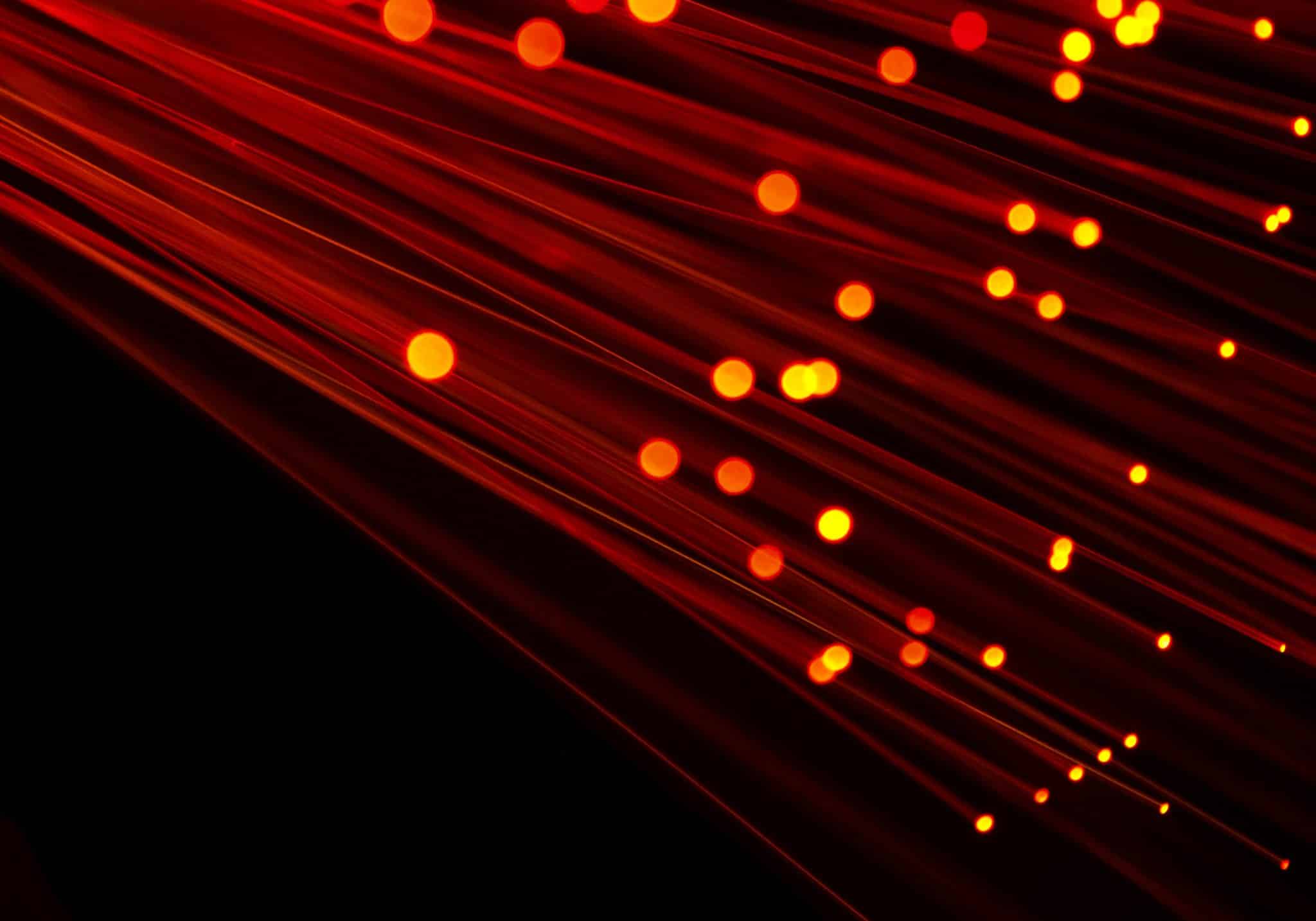As we become more and more reliant on the internet – from streaming the latest movies and TV shows to taking part in video calls and accessing large files for work – having a fast and reliable internet connection has become an essential part of everyday life.
And, with coverage of more than 97% throughout the UK, fibre broadband has become the go-to to meet these needs. But what is fibre broadband and how does it work?
What is Fibre Broadband?
Fibre broadband refers to internet connections that use fibre optic cables to transmit data.
These cables, made of thin strands of glass or plastic, use light signals to send data at speeds much faster than traditional copper wires.
When it comes to fibre broadband, fibre optic cables can be used either for whole or part of the journey from the telephone exchange to your home.
Fibre broadband is split into two different kinds: Fibre to the Cabinet (FTTC) and Fibre to the Premises (FTTP). The speed and quality of your overall connection will depend on which connection type you choose.
FTTC vs FTTP
Fibre to the Cabinet (FTTC) broadband involves fibre optic cables running from the exchange to the green street cabinet. Then, from the cabinet to your home, copper telephone wires from the BT Openreach network are used.
Although FTTC uses less copper than standard ADSL (which uses copper for the entirety of its connection), your connection could still be slowed significantly depending how far you live from the street cabinet, or if the copper cables used to deliver the connection are old, frayed, or damaged. Maintenance of these copper wires is becoming increasingly phased out as BT Openreach prepares for the PSTN switch-off, due to take effect by the end of 2025.
Fibre to the Premises (FTTP) on the other hand, runs fibre optic cables directly from the exchange to the cabinet and then to your home. Because there are no copper telephone wires involved, the speed and reliability of a FTTP connection is significantly higher than FTTC.
Having an FTTP connection also helps future-proof your home as more and more broadband providers are moving away from offering FTTC connections due to the upcoming PSTN switch off.
How does Fibre Optic technology work?
Fibre optic technology is based on the principle of light transmission. Data is converted into light pulses which travel at the speed of light through the fibre cables. The core of each cable is surrounded by a cladding layer that reflects the light back into the core, allowing for efficient long-distance transmission.
How do Fibre Optic cables benefit broadband?
There are a number of ways in which fibre optic cables are used to benefit broadband, including: -
Speed
Fibre broadband provides much faster download and upload speeds compared to traditional broadband. This is crucial for streaming high-definition content, online gaming, and large file transfers.
Reliability
Fibre optic cables are less susceptible to environmental factors like weather and electromagnetic interference, leading to a more stable connection.
Capacity
Fibre cables can handle more data than copper, making it ideal for areas with high internet usage demands.
Reach
All major broadband providers in the UK offer FTTC fibre through the BT Openreach network, with an increasing number able to now offer FTTP connections, too.
There are also a number of independent providers (meaning they are not reliant on BT Openreach’s network and infrastructure) that offer just full fibre deals. These providers include Community Fibre, Hyperoptic Broadband, and G.Network. However, services with these providers is currently more limited than those that use the Openreach network.
Is Full Fibre broadband available throughout the UK?
While full fibre fibre availability is expanding, there are challenges. Broadband access in rural areas, for example, remains limited due to the high cost of infrastructure development.
However, initiatives like the UK government's Gigabit Broadband Voucher Scheme have been introduced to help incentivise full fibre growth across the country.
Aside from waiting for full fibre access, satellite broadband from Starlink is helping bridge a gap for those who live in remote areas and require incredibly fast internet speeds.
Compare broadband deals
We find deals from all the top providers and help you switch.
